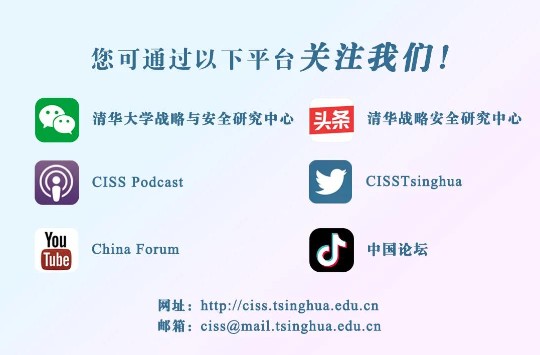编者按
在庆祝中国加入《东南亚友好合作条约》20周年之际,前驻英国大使傅莹在接受《中国日报》独家采访时,回答了涉及东盟和整个亚洲未来中大家关心最多的几个问题。
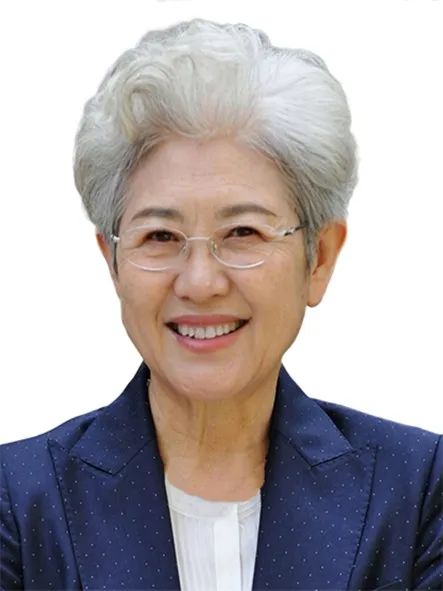
问题一:今年是中国加入《东南亚友好合作条约》20周年。您能分享一下20年前在巴厘岛签署该条约时给您印象最深的时刻或细节吗?
傅莹: 20年前中国签署加入《东南亚友好合作条约》(TAC)是中国与东盟关系发展进程中的里程碑事件,是双方了解和信任步步提升、水到渠成的结果。
TAC是马来西亚、菲律宾、泰国、新加坡、印度尼西亚5个东盟创始国于1976年初在首次东盟首脑会议上签署的基础性政治文件。我是1990年进入中国外交部亚洲司工作的,有机会观察和参与了中国与东盟关系的起飞阶段。
中国改革开放初期高度重视塑造外部的合作环境,与东盟在维护地区和平、促进包容发展的共同追求下相互靠近,1991年开启了政治对话进程。此后10多年间,双方关系“一年一个小台阶、三年一个大台阶”地快步发展。
2003年是中国与东盟关系的重要一年。春天,在非典开始肆虐亚洲的关键时刻,中国与东盟举行了领导人特别会议,决定同舟共济、共克时艰。10月,中国领导人再赴东南亚,在印度尼西亚巴厘岛出席第七次中国与东盟(10+1)领导人会议。作为最重要的成果,双方签署《联合宣言》,建立“面向和平和繁荣的战略伙伴关系”。在此框架下,中方签署加入TAC的政治文件,在各大国当中率先加入TAC,双方互信得到进一步提升,彼此合作迈上新台阶。
中国加入TAC进一步增强了双方互信,在本地区乃至世界上产生了重大积极影响。在中国表率作用牵动下,印度、日本、韩国、俄罗斯、新西兰、丹麦、希腊、荷兰、阿曼、卡塔尔、阿联酋、乌克兰等多个国家签署加入TAC,显著提升了东盟的影响力和在区域合作与安全框架建设中的中心地位。

2023年7月13日,中央外办主任王毅在雅加达出席中国-东盟(10+1)外长会,东盟各国外长、东盟观察员和东盟秘书长与会。(新华图片)
问题二:20年来,中国与东盟国家在该条约的推动下取得了哪些最突出的成就?当前,世界形势正在发生深刻变化,面对重大挑战,如何构建更为紧密的中国-东盟命运共同体?
傅莹:20年前中国与东盟战略伙伴关系的确立以及中国加入《东南亚友好合作条约》,扫清了主要的政治障碍和信任赤字,为双方关系迈入 “黄金20年”提供了重要动力。过去20年,中国与东盟关系在以下几个方面取得长足进展。
一是政治互信日趋稳固。2021年11月,在中国-东盟建立对话关系30周年纪念峰会上,双方宣布建立面向和平、安全、繁荣和可持续发展的全面战略伙伴关系。习近平主席提出共建和平、安宁、繁荣、美丽、友好家园,为中国-东盟关系的进一步发展指明了方向。双方已经为此制定行动计划(2022-2025),正在认真落实这一理念。
二是经济交融更加紧密。中国与东盟的贸易额继续快速发展,从2003年的782亿美元增长到2022年的9753亿美元,扩大近12倍。2020年,东盟成为中国最大贸易伙伴,而此前多年,中国已经是东盟的最大贸易伙伴。目前,中国和东盟已连续3年互为最大贸易伙伴。
三是互联互通水平不断提高。双方致力于高质量共建“一带一路”与《东盟互联互通总体规划2025》协同发展,推动形成更加密切、开放和联动的区域发展格局。中老铁路建成通车,雅万高铁、中泰铁路等项目正在加紧建设,运输、通信和新能源等项目有序推进,不断提升双方20多亿民众的生活福祉。
四是人文交流更加活跃。中国-东盟博览会、中国-东盟教育交流周、中国-东盟中心等平台搭建起民心相通和人文交流的桥梁。媒体智库通过高层研讨、论坛交流会等方式促进文明交流互鉴。政策沟通、人员交流、平台共建、技术转移合作等推动了科技合作交流。
今年既是中国与东盟建立战略伙伴关系以及中国加入《东南亚友好合作条约》20周年,也是习近平主席提出建设更为紧密的中国-东盟命运共同体10周年。未来,双方将秉持互利共赢精神,继续挖掘新的合作机遇,共护和平与安全、共促经济稳定与繁荣、共建人文交流与友好,将合作蛋糕越做越大。中国过去是、现在是、将来也永远是东盟的好邻居、好朋友、好伙伴。
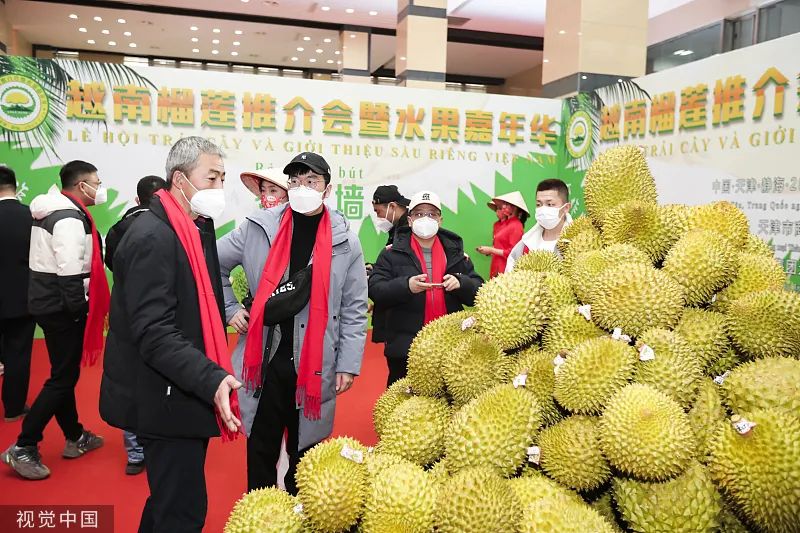
今年1月13日越南榴莲推介会在天津举行。(视觉中国 / 中国日报网供图)
问题三:您在东南亚工作多年,并深入参与了有关南海问题的对话交流。您觉得,南海争议当事国应该如何更好地处理南海局势,使南海成为和平之海、友谊之海、合作之海?
傅莹:中国在南海的领土主权和海洋权益是在长期的历史进程中形成和确立的。中国与南海周边部分国家围绕南海部分岛礁的领土主权问题及海域管辖权争议始于20世纪60年代末70年代初,这与南海的地理位置、《联合国海洋法公约》有关制度的设立和油气资源的发现不无关系。
长期以来,中国坚持以和平谈判的方式解决分歧,主要是为了维护中国-东盟关系大局,呵护周边和睦、合作的安全环境。中国通过与直接当事方的谈判,以及同东盟国家的政治协商,比较有效地控制住了南海争议的扩大与发酵。2002年中国与东盟各国签署《南海各方行为宣言》,致力于管控南海分歧、推进海上合作、加强睦邻互信伙伴关系,共同维护南海地区的和平与稳定。
但是从2009年开始,伴随着美国“亚太再平衡”战略的实施和推进,南海地区再起波澜,南海的争议问题再度升温。事实上,二战后美国对中国确立南海诸岛主权是支持和认可的,但是随着国际格局的演变,美国的南海政策逐渐发生变化,退步成“保持中立”,乃至“选边站队”,公然介入南海争议。
2014年,中国与东盟国家提出采取“双轨思路”处理南海问题,即:一方面中国与南海争端当事国通过友好协商和平解决海上争议;另一方面中国同东盟国家一起共同维护南海和平稳定。双边层面,南海当事国之间设立了各种对话磋商机制,其中包括中国同越南、菲律宾等国建立的对话机制。这些机制为当事国妥处分歧、增进互信、促进合作发挥了重要作用。多边层面,中国还加快了与东盟国家落实《南海各方行为宣言》、磋商“南海行为准则”(COC)的进程。
去年是《宣言》签署20周年。中国和东盟国家领导人发表了纪念《宣言》联合声明,其中提及将南海建设成为和平、友谊、合作之海惠及各方。中方还举办了高规格纪念研讨会,我本人也亲临现场,与东盟各国同事畅叙南海维稳和治理之策。海上合作方面,各方在海洋环保、科研、搜救、执法、航行安全、军事互信等领域举办了许多合作项目,建立了外交高官热线平台,达成了南海海上意外相遇规则联合声明、南海海岸和海洋环保宣言等重要文件。中方还积极探讨同南海当事国开展海上共同开发。
南海和平稳定事关地区国家的发展大局,也是国际社会的共同关切。作为妥善处理南海问题和管控南海分歧的当事方,中国和东盟国家应当立足地区和平稳定与互利合作的大局,恪守《南海各方行为宣言》精神,尊重公认的国际法和协商一致、照顾各方舒适度等“东盟方式”,有效管控分歧和争议,警惕和抵制任何损害地区合作氛围和危害和平稳定的企图和做法,切实维护地区和平稳定和航行自由,从而将南海真正建设成为“和平之海、友谊之海、合作之海”。
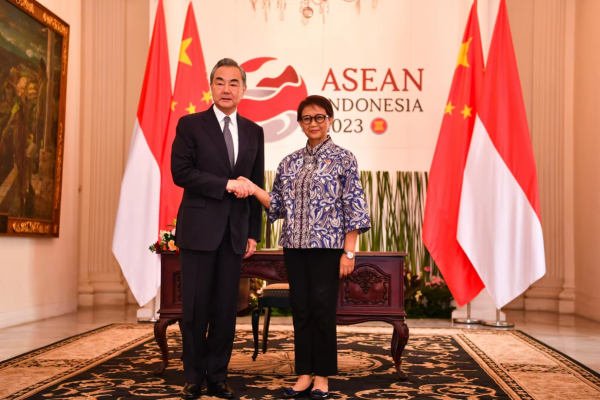
当地时间2023年7月12日,中央外办主任王毅在雅加达会见印尼外长蕾特诺。(中国日报网供图)
问题四:随着RCEP的全面实施,您认为双方下一步的合作增长点在哪里?“蓝色经济”、“绿色经济”、“数字经济基础设施”等等?是否会促进中国与东南亚国家间的相互依存和世界多极化?
傅莹:RCEP是东盟在2012年倡议发起的,于2020年11月15日正式签署,2022年1月1日正式生效,成员方包括东盟10国和中国、日本、韩国、澳大利亚、新西兰。随着今年6月2日RCEP在菲律宾正式落地,这个全球最大的自由贸易区进入全面实施新阶段。
RCEP通过关税优惠、通关简化、贸易投资便利化等举措,为区域各国企业和民众带来实打实的红利,大家共享合作发展的新机遇。据统计,2022年,仅中国与其他13个已生效成员国的双边贸易额就高达1.85万亿美元,同比增长7.5%,占中国进出口总值的近30%。
中国对8个RCEP成员国进出口增速超过两位数,对印度尼西亚、新加坡、缅甸、柬埔寨、老挝这几个东盟国家的进出口增速都超过了20%。RCEP不仅为地区发展提供了一个更高更广阔的合作平台、还带来蓝色经济、绿色经济、数字经济基础设施等新增长点,开启了提质升级的新空间,为中国与东盟高质量合作发展插上腾飞的新翅膀。以数字经济为例,2022年11月发布的《RCEP跨境电商发展报告》显示,2021年第四季度RCEP签署协议以后,东盟国家的中小企业跨境电商B2B指数快速上升,在疫情中逆势增长。
RCEP的落实生效与中国东盟自贸区新一轮升级谈判交替并行,相互促进。未来,一个以中国与东盟双边合作为基础,各区域贸易协定为补充的多层次相交叠的区域合作架构将会发展壮大,不断促进本地区产业链、供应链的多元化发展和纵向延伸、横向融合,激发地区国家优势互补的潜力,推动更大范围、更高水平、更深层次的开放合作。
在当前单边主义和贸易保护主义抬头的背景下,RCEP的全面生效实施表明中国与东盟国家共同对外发出支持多边主义和自由贸易的积极信号,共同抵制反全球化、逆全球化和以价值观、意识形态划界、大搞阵营对抗的逆流。
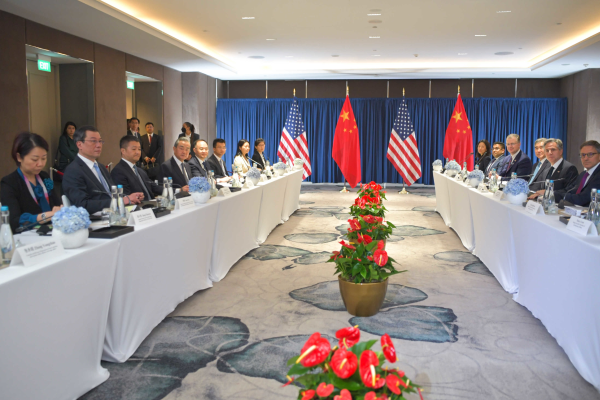
2023年7月13日,中央外办主任王毅在雅加达应约会见美国国务卿布林肯。(中国日报供图)
问题五:在美国流行这样一种说法,就是美国应加强与东盟等国家的合作关系,塑造中国周边的战略环境,以“对冲”、“制衡”中国。在一些东南亚国家,长期以来也存在这样的观点,就是东盟国家应主动平衡大国,在大国的相互制衡中提高自己的安全系数。您如何评价此类观点,认为中国应采取什么样的办法,平息那些自认为身处“大国丛林”的中小国家的安全焦虑?
傅莹:我不认为把中小国家当工具是一个负责任大国应有的作法。东南亚地区,近代以来有着被域外强国奴役和利用的痛苦记忆。冷战期间,美苏把东南亚当作对抗竞争的重要前沿,在这里打过“代理人战争”,也组建过军事集团,导致一些陷入冲突的地区中小国家长期深陷动荡、贫困不能自拔。冷战结束后,地区国家聚焦经济发展、积极参与合作,过上了好日子,对经济全球化、大国关系改善和国家间互利交融是全力支持的,因为它们知道这是最符合自身利益的安全之道。
过去我在与东盟外交官打交道时,他们常说,大国就好比丛林里的大象,其他国家如同草地,地区中小国家最担心的就是大象在草地上打架。东盟国家的这种忧心可以理解。东盟国家在不断推进自身改革发展的同时,积极组建国家集团、推动区域合作,并在不同力量之间开展多元、平衡的外交,寻求为促进地区融合发挥“中心作用”、为推动大国和解发挥“协调作用”,它们对中国给予的认可和支持是珍惜和看重的。
现在是21世纪的第三个十年,美国把中国树成战略竞争的标靶,推行以遏制、围堵中国为目标的“印太战略”,要把本地区重新推入冷战对抗的深渊,为此盘算着如何使地区安全秩序阵营化,如何拉拢、利用中小国家牵制、打压竞争对手,如何拼凑“去中国化”的供应链联盟。这种战略设计不得人心,也很危险,思维还停留在冷战的历史旧时代。
东盟各国是中国身边搬不走的邻居,中国坚持与邻为善、以邻为伴的政策,不断深化友好合作和互利交融,不要求它们在中美矛盾中选边站队。同时,我们也相信,东盟国家有主见、有能力坚守自己的外交原则和在区域合作与地区安全框架建设中的中心地位,不会愿意做被一个大国利用来损害另一个大国的事。
Fu Ying elaborates on China-ASEAN progress in 20 years
Editor's Note
As China and ASEAN jointly celebrate the 20th anniversary of China's accession to the Treaty of Amity and Cooperation in Southeast Asia, senior diplomat Fu Ying gifted China Daily with diplomatic details then and now and elaborates on several issues relating to South China Sea disputes and US influences in an exclusive interview with China Daily.
Editor's Note
Q1: This year marks the 20th anniversary of China's accession to the Treaty of Amity and Cooperation in Southeast Asia. Could you share with us anything that particularly impressed you most when the treaty was signed in Bali 20 years ago?
Fu Ying: Twenty years ago China acceded to the Treaty of Amity and Cooperation in Southeast Asia (TAC), a milestone in the development of China-ASEAN relations, which is a natural result of the growing understanding and trust between the two sides.
The treaty was established in 1976 by Malaysia, Thailand, the Philippines, Singapore and Indonesia, founding members of the Association of Southeast Asian Nations, during the first ASEAN summit. In 1990, I joined the Department of Asian Affairs of the Chinese Ministry of Foreign Affairs, and that gave me the chance to witness and to be part of the takeoff phase of China-ASEAN relations.
In the early days of reform and opening-up China was committed to shaping a favorable external environment for collaboration, and it moved closer to ASEAN in the common pursuit of maintaining regional peace and promoting inclusive development and started the political dialogue process in 1991. In the decade since, relations between the two sides have developed rapidly, with a small step every year and a big step in every three years.
The year 2003 was important in China-ASEAN relations. In the spring when SARS was raging in Asia, China and ASEAN held a special leaders' meeting and decided to tackle the problem together. In October Chinese leaders visited Southeast Asia again to attend the Seventh China-ASEAN (10+1) Summit in Bali, Indonesia. The most important result of the summit was that the two sides signed a joint declaration on Strategic Partnership for Peace and Prosperity.
Under this framework the political document of China's accession to the Treaty of Amity and Cooperation in Southeast Asia took the lead among all the major countries engaged with TAC, which further enhanced mutual trust and took China-ASEAN collaboration to a new level. With China's leading role, countries including India, Japan, South Korea, Denmark, Greece, the Netherlands, New Zealand, Oman, Qatar, Russia, Ukraine and the United Arab Emirates have also acceded to the treaty, enhancing ASEAN's influence and its "central role" in building regional cooperation and security frameworks.
Q2: What are the most outstanding achievements of China and ASEAN countries in the past 20 years thanks to the treaty? As the world undergoes profound changes, what still needs to be done to build a closer ASEAN-China community?
Fu Ying: The establishment of the strategic partnership between China and ASEAN and China's accession to the Treaty of Amity and Cooperation in Southeast Asia 20 years ago cleared major political hurdles and trust deficits, providing an important impetus for the relationship to move into a golden 20 years. China-ASEAN relations have made significant strides in the following areas:
First, political mutual trust has become increasingly solid. In November 2021, at the Special Summit to Commemorate the 30th Anniversary of China-ASEAN Dialogue Relations, the two sides announced the establishment of a comprehensive strategic partnership for peace, security, prosperity and sustainable development. The two sides have formulated the Plan of Action (2021-25) to implement the China-ASEAN strategic partnership.
Second, economic integration has deepened. China's trade with ASEAN continues to grow rapidly, expanding nearly 12-fold from $78.2 billion in 2003 to $975.3 billion last year. In 2020, ASEAN became China's largest trading partner, and China has been ASEAN's largest trading partner for more than 10 years. At present, China and ASEAN have been each other's largest trading partner for three consecutive years.
Third, connectivity has improved. The two sides have worked closely on synergizing the Belt and Road Initiative and the Master Plan on ASEAN Connectivity 2025 in carrying out high-quality collaboration to forge a closer, open and integrated regional development pattern. The China-Laos railway is up and running. The construction of the Jakarta-Bandung high-speed railway, the China-Thailand railway and a number of other Belt and Road projects is accelerating. Transport, communication and new-energy projects are being carried out to improve the well-being of more than 2 billion people.
Fourth, people-to-people exchanges have become more active. Platforms such as the China-ASEAN Expo, the China-ASEAN Education Cooperation Week and the ASEAN-China Centre have built bridges to connect our two peoples. Media think tanks have promoted civilizational exchanges and mutual learning through high-level seminars, forums and dialogue. Policy communication, personnel exchange, platform construction and joint work on technology transfer have boosted science and technology collaboration and exchange.
This year marks the 20th anniversary of the strategic partnership between China and ASEAN, along with China's accession to the Treaty of Amity and Cooperation in Southeast Asia. Looking ahead, both sides should uphold the principles of mutually beneficial collaboration and strive to explore new opportunities for working together, at the same time jointly safeguarding peace and security, promoting economic stability and prosperity, and fostering people-to-people exchanges and friendships.
This steadfast commitment aims to nurture an environment conducive to expanding and enhancing our cooperative endeavors. China has, continues to be and will always be a good neighbor, friend and partner to ASEAN.
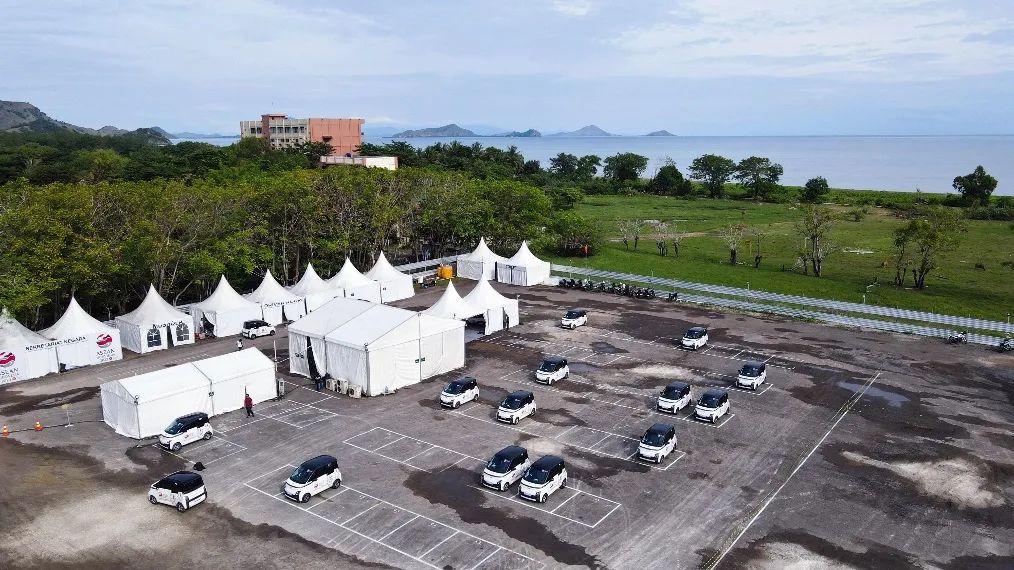
Wuling Air electric vehicles at the camp of Wuling Motors Indonesia are on standby for the 42nd ASEAN Summit in Labuan Bajo, Indonesia. Wuling provided commuter services for delegations to and from the summit venue from May 9 to 11. [Photo/Xinhua]
Q3: You've been working in Southeast Asia for years and have been deeply involved in exchanges over the South China Sea. How can countries involved in sea disputes here better handle the situation and make the South China Sea a sea of peace, friendship and collaboration?
Fu Ying: China's sovereignty and maritime rights and interests over the islands and reefs of the South China Sea have been established through a long historical process. The disputes over territorial sovereignty and maritime jurisdiction between China and some neighboring countries around some islands and reefs in the South China Sea began in the late 1960s and early 1970s, which are related to the geographical position of the South China Sea, the establishment of the relevant regime of the United Nations Convention on the Law of the Sea and the discovery of oil and gas resources.
China has long upheld peaceful negotiations to resolve differences, primarily to maintain the general stability of the China-ASEAN relationship and to protect a peaceful and cooperative security environment in its neighborhood.
Through negotiations with the parties directly involved in the disputes and in political consultations with ASEAN countries, China has ensured that disputes in the South China Sea have not been exacerbated. In 2002 the country and ASEAN members signed the Declaration on the Conduct of Parties in the South China Sea, which is committed to managing differences in the South China Sea, promoting maritime cooperation, strengthening good neighborliness and mutual trust, and jointly maintaining peace and stability in the region.
However, since 2009, as the US has pushed its so-called Asia-Pacific rebalancing strategy, the South China Sea has once again been embroiled in conflict. In fact, after World War II the US extended its support and recognition for China's sovereignty over islands of the South China Sea. Nonetheless, as the international situation changed, US policy concerning the South China Sea gradually altered, regressing into "maintaining neutrality", or even "choosing sides", flagrantly intervening in disputes relating to the South China Sea.
In 2014 China and ASEAN countries proposed to adopt a "dual-track approach". That is, on the one hand, China and the parties directly concerned would resolve maritime disputes through amicable consultation; on the other, China would work with ASEAN countries to maintain peace and stability in the South China Sea. The countries involved in the South China Sea disputes have established various mechanisms for bilateral dialogue and consultation, including those between China and Vietnam, the Philippines and other countries. These mechanisms have helped the countries concerned to resolve their differences, enhance mutual trust and promote collaboration.
At the same time China has accelerated the implementation of the Declaration on the Conduct of Parties in the South China Sea and the negotiation of the Code of Conduct in the South China Sea with ASEAN countries. Last year marked the 20th anniversary of the declaration, in which leaders of China and ASEAN countries released a joint statement, recognizing the benefits of having the South China Sea as a sea of peace, friendship, and cooperation. China also organized a high-level commemorative seminar, which I attended together with counterparts of ASEAN countries to discuss strategies for maintaining stability and governance in the South China Sea.
As for maritime collaboration, various projects have been organized relating to marine environmental protection, scientific research, search and rescue, law enforcement, navigational safety and military mutual trust, and a hotline platform for senior diplomats has been established. Important instruments such as the Code for Unplanned Encounters at Sea in the South China Sea and the Declaration for Coastal and Marine Environmental Protection in the South China Sea were agreed on. China has also engaged in joint maritime development with countries directly concerned in the South China Sea.
Peace and stability in the South China Sea is a matter of development for regional countries and a common concern for the international community. China and ASEAN countries, as parties directly concerned in properly handling the issue and managing differences in the South China Sea, should adhere to the spirit of the Declaration on the Conduct of Parties in the South China Sea, respect well recognized international law and the ASEAN way of consensus building and accommodating each other's comfort level, and effectively manage differences and disputes based on regional peace and stability and mutually beneficial cooperation. All parties should stay vigilant and resist anything that jeopardizes collaboration, peace and stability in this region and protect the freedom and safety of navigation. They must work together to truly build the South China Sea into a sea of peace, friendship and cooperation.
Q4: With the full implementation of the Regional Comprehensive Economic Partnership, where do you think the next growth areas of collaboration between the two sides? The blue economy, green economy, digital economy infrastructure and so on? Will they promote the interdependence of the two sides and international multipolarization?
Fu Ying: The RCEP, initiated by ASEAN in 2012, was officially signed on November 15, 2020 and came into force on January 1 last year, with 10 ASEAN countries and China, Japan, South Korea, Australia and New Zealand as members. As the RCEP agreement took effect for the Philippines on June 2 this year, the world's largest free trade zone entered the phase of full implementation.
The RCEP brings tangible benefits to businesses and people in the region through means including tariff preferences, customs clearance simplification, trade and investment facilitation, and everyone shares new opportunities for collaboration and development presented that the agreement presents. Last year China's bilateral trade with 13 other RCEP member countries where the RCEP agreement has come into force reached $1.85 trillion, up 7.5 percent year-on-year, accounting for nearly 30 percent of the value of China's total imports and exports. Rates of growth in China's imports and exports to the eight RCEP member countries exceeded double digits, and rates of growth of its imports and exports to some ASEAN countries, namely Indonesia, Singapore, Myanmar, Cambodia and Laos, exceeded 20 percent.
The RCEP not only provides a broader platform for regional development, but also brings new areas of growth such as the blue economy, green economy and digital economy infrastructure, expanding new space for upgraded collaboration and paving new ways for high-quality collaboration between China and ASEAN. Taking the digital economy as an example, the RCEP Cross-Border e-Commerce Development Report published in November said that after the RCEP agreement was signed in the fourth quarter of 2021 the business-to-business index of cross-border e-commerce for small and medium-sized companies in ASEAN countries rose rapidly, bucking the trend during the COVID-19 pandemic.
The implementation of the RCEP and the new round of China-ASEAN FTA upgrading negotiations will mutually reinforce each other. In the future a multi-level overlapping regional cooperation structure based on bilateral cooperation between China and ASEAN, complemented by various regional trade agreements, will further develop, which will enrich and further integrate the industrial and supply chains in the region, stimulate the potential of regional countries to complement each other's advantages and promote a wider, higher and deeper level of openness and cooperation.
Though unilateralism and trade protectionism are on the rise, full implementation of the RCEP indicates that China and ASEAN countries are jointly sending positive signals to support multilateralism and free trade, and are moving against anti-globalization, counter-globalization and confrontation based on values and ideological demarcation.
Q5: It is often said in the United States that the country should strengthen its partnership with ASEAN and other countries to shape the strategic environment around China in order to keep China in check. In some Southeast Asian countries there is also a long-standing view that ASEAN countries should take the initiative to act as a balance between the major powers and to improve their security when major powers are seeking to maintain strategic balance. What do you think of this, and do you think China should do something to calm the security fears of small and medium-sized countries that consider themselves caught in a conflict between the big powers?
Fu Ying: I do not believe that manipulating small and medium-sized countries is the way a responsible power should behave. Southeast Asia has painful memories of being enslaved and exploited by foreign powers in modern history. During the Cold War the US and the Soviet Union used Southeast Asia as a key frontier for confrontation and competition, and fought proxy wars and formed military blocs that led to long-term turmoil and poverty for some small and medium-sized countries caught in conflict. After the Cold War ended, countries in this region focused on economic development and worked together, and as a result enjoyed better times. They supported economic globalization, improvement of relations between major powers and mutually beneficial integration between countries because they understood that this security policy best serves their interests.
I have interacted with diplomats from ASEAN countries in the past. They have often said that major powers are like elephants in the jungle, while other countries are like grass, and when elephants fight, it is the grass that suffers. This concern of ASEAN countries is understandable. While promoting their own reform and development, ASEAN countries are forming country groups, promoting regional collaboration and engaging in diversified and balanced diplomacy involving various actors, seeking to play a "central role" in promoting regional integration and to be a "coordinator" in promoting reconciliation among major powers. They value the recognition and support that China provides.
Now in the third decade of the 21st century, the US has made China a target of strategic competition and is pursuing its so-called Indo-Pacific strategy, the goal being to "contain" and encircle China. The US is pushing the region back into the abyss of Cold War confrontation, working out how to divide the regional security order into blocs, how to draw in and exploit small and medium-sized countries to restrain and suppress competitors, and how to put together a supply chain alliance "decoupling from China". This strategy reflects an outdated Cold War mentality that is dangerous and runs counter to the will of people.
China and ASEAN are close neighbors that are immovable. China upholds its policy of neighborhood diplomacy featuring amity, sincerity, mutual benefit and inclusiveness as well as building partnerships with its neighbors, and does not require ASEAN countries to choose between China and the US. At the same time, we believe ASEAN countries have their own views and are capable of adhering to their own diplomatic principles and their central role in building regional collaboration and regional security frameworks. We also believe ASEAN countries are unwilling to be manipulated by one major power to harm the other.
文章2023年7月14日首发于《中国日报》
